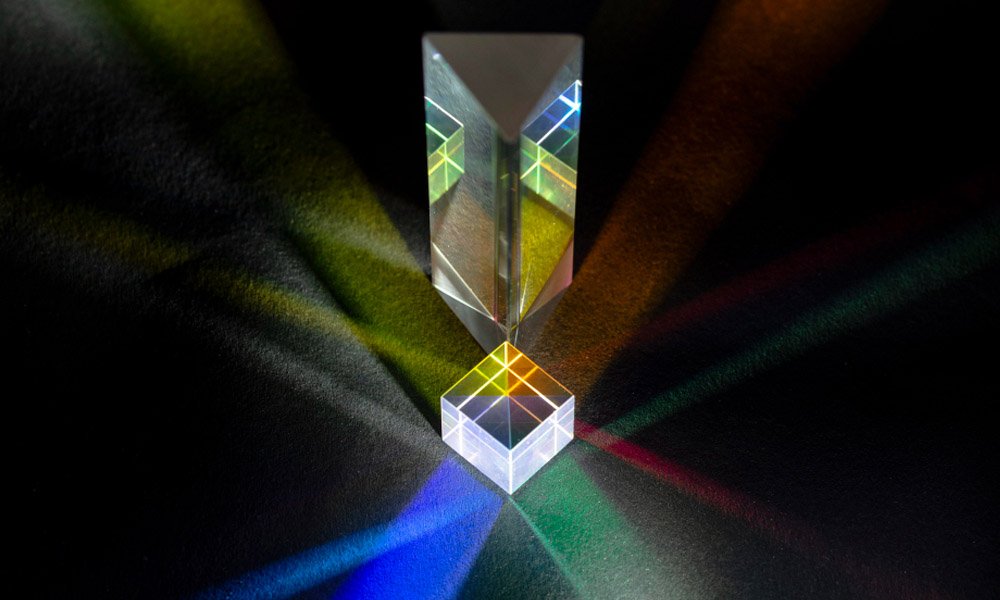Guide
Decoding the Diamond Colour Scale with Ease
Published
1 day agoon
By
Alexander
Diamonds have long been admired as symbols of love, strength, and timeless beauty. Yet beyond their dazzling surface lies a world of detail and artistry that shapes their value and allure. One of the most significant of these details is colour. It’s a subtle characteristic that can transform how a diamond looks and feels, and even the emotion it conveys. Understanding the diamond colour scale not only helps you make informed choices but also deepens your appreciation of the craftsmanship and science behind every stone.
The Spectrum of Brilliance
At first glance, diamonds often appear white or colourless, but even the purest gems carry tiny traces of colour that influence their brilliance. The Gemological Institute of America (GIA) developed the modern diamond colour grading system to measure and standardise these variations, ensuring accuracy and consistency across the global jewellery industry.
The scale begins at D, which represents absolute colourlessness. It’s a rarity prized for its crisp purity and unmatched sparkle. It progresses through subtle increments to Z, where diamonds begin to display visible warmth, often in light yellow or brown tones. The differences between each grade are incredibly fine, often detectable only under specialised lighting and magnification. Yet these subtle shifts have a powerful impact on how light interacts with the diamond and how it is perceived.
A D-grade diamond exudes a bright, icy brilliance that reflects light flawlessly. In contrast, a diamond closer to the Z range carries a gentle glow that can feel warmer and more organic. Both have beauty; the key lies in understanding which style resonates with your aesthetic vision.
Why Does Colour Matter?
Colour is not just about appearance. It is about how the diamond tells its story through light. A colourless diamond allows white light to pass through without obstruction, creating that crisp sparkle associated with luxury and purity. As traces of colour appear, they subtly filter that light, giving the diamond a softer and sometimes more romantic tone.
Understanding the diamond colour scale gives jewellers, gemologists, and buyers a shared language to evaluate beauty and value with precision. For instance, a near-colourless diamond in the G–H range can appear virtually identical to a D-grade stone once set in yellow or rose gold. The warmth of the metal harmonises with the diamond’s tone, masking any hint of colour and achieving a balanced look.
For those who manage jewellery collections, this knowledge is essential. It allows buyers and sellers to create pieces that meet both emotional and economic goals. A client may find that a slightly lower colour grade offers the perfect combination of beauty and affordability. This is an insight that transforms the buying experience from transactional to personal.
The Science Behind the Hue
So where does this colour come from? In most cases, it’s the result of trace elements within the diamond’s crystal structure. A hint of nitrogen, for example, can give a yellowish tint, while structural distortions can influence how light passes through the stone. These natural variations occur during the diamond’s formation deep within the Earth’s mantle, under immense heat and pressure over billions of years.
This means that no two diamonds are identical. Each is a product of time and geological artistry. Recognising these natural differences allows both jewellers and buyers to see diamonds not as commodities but as individual works of nature enhanced by human craftsmanship.
Balancing Colour with Cut and Clarity
Colour is one pillar of what jewellers call the “Four Cs”: colour, cut, clarity, and carat weight. These characteristics work together to shape a diamond’s final appearance. Even a lower colour grade can appear stunning if paired with a superior cut.
A well-cut diamond maximises light performance, reflecting and refracting light in a way that enhances brightness and conceals small traces of colour. Round brilliant and princess cuts, for example, are known for their ability to mask faint warmth. On the other hand, step cuts like emerald and Asscher shapes highlight transparency and may make colour more noticeable.
Clarity also plays a role. A diamond free of internal inclusions allows light to move more freely, enhancing sparkle and diminishing visible tint. This interplay of characteristics is why professional jewellers and B2B partners focus on balance rather than perfection in a single category. True beauty lies in harmony.
Tailoring Colour to Style and Setting
A diamond’s colour interacts with its setting, influencing how it looks to the eye. White metals like platinum or white gold enhance the brightness of colourless stones, making D–F diamonds shine with unmatched purity. Conversely, yellow and rose gold settings naturally complement diamonds with slight warmth, such as G–J grades, blending tones beautifully.
For jewellery designers and retailers, this creates opportunities for creativity. Matching colour to metal tone allows for more flexible inventory choices and broader price points without sacrificing elegance. It also enables clients to find a piece that feels personal and cohesive, whether their preference leans toward a modern minimalist aesthetic or vintage romance.
Embracing Individual Preferences
While many associate higher colour grades with prestige, personal preference plays a far more important role. Some clients prefer the icy brilliance of a colourless diamond, while others are drawn to the subtle glow of warmer tones that evoke a sense of intimacy and timeless charm.
The beauty of decoding the diamond colour scale lies in this freedom. It empowers both professionals and consumers to move beyond rigid grading and focus instead on emotional resonance. When colour becomes part of the design narrative, every diamond takes on a new meaning as unique as the person wearing it.
A Final Sparkle
Every diamond tells a story, and colour is one of its most poetic elements. It reflects the Earth’s history, the cutter’s precision, and the wearer’s individuality. By learning to read the diamond colour scale, you gain more than technical knowledge; you gain insight into the soul of the gem itself.
You may like


Tweezer Top Explained: The Candlestick Pattern That Signals A Possible Shift In Momentum

DID Number: Making Business Communication Seamless and Local

Decoding the Diamond Colour Scale with Ease

How to Make Paying Taxes Easier

Top Ikea Hacks to Transform Your Home Efficiently

Unique Ways to Immerse Yourself in Local Culture While Travelling

Importance of Three Ashras of Ramadan in Islam

How Local Couriers Support Small Businesses

Best Replica YSL Bag in Patent Leather

Put Pen to Paper: How Custom Notebooks Can Make a Lasting Impression

Carol Kirkwood’s Journey: Her Real Age, Husband, Career, and More

Revolutionizing Healthcare: The Emergence of AI-Driven Analytics

How Machine Learning and AI are Redefining the Future?

Aliza Barber: Meet Lance Barber’s Wife, Age, Life, Profile, Career and Net Worth

Evelyn Melendez: Jordan Knight’s Wife Bio, Marriage, Family, Career and Net Worth

Ilan Tobianah Biography: Family, Marriage, Lifestyle, Career and Net Worth

Who was Alice Marrow? Everything to Know About Ice-T’s and His Mother

King Von’s Autopsy Report: The Truth Behind the Tragic Death

Meet Otelia Cox: The Supportive Wife of Tony Cox – A True Fairy Tale Romance

Tea Leoni and Tim Daly Split – A Closer Look at Their Relationship and Breakup

Tweezer Top Explained: The Candlestick Pattern That Signals A Possible Shift In Momentum

DID Number: Making Business Communication Seamless and Local

Decoding the Diamond Colour Scale with Ease

How to Make Paying Taxes Easier

Top Ikea Hacks to Transform Your Home Efficiently

Unique Ways to Immerse Yourself in Local Culture While Travelling

Importance of Three Ashras of Ramadan in Islam

How Local Couriers Support Small Businesses

Best Replica YSL Bag in Patent Leather

Put Pen to Paper: How Custom Notebooks Can Make a Lasting Impression
Category
Trending
-

 News2 months ago
News2 months agoCarol Kirkwood’s Journey: Her Real Age, Husband, Career, and More
-

 Health2 years ago
Health2 years agoRevolutionizing Healthcare: The Emergence of AI-Driven Analytics
-

 Technology2 years ago
Technology2 years agoHow Machine Learning and AI are Redefining the Future?
-

 Celebrity1 year ago
Celebrity1 year agoAliza Barber: Meet Lance Barber’s Wife, Age, Life, Profile, Career and Net Worth
